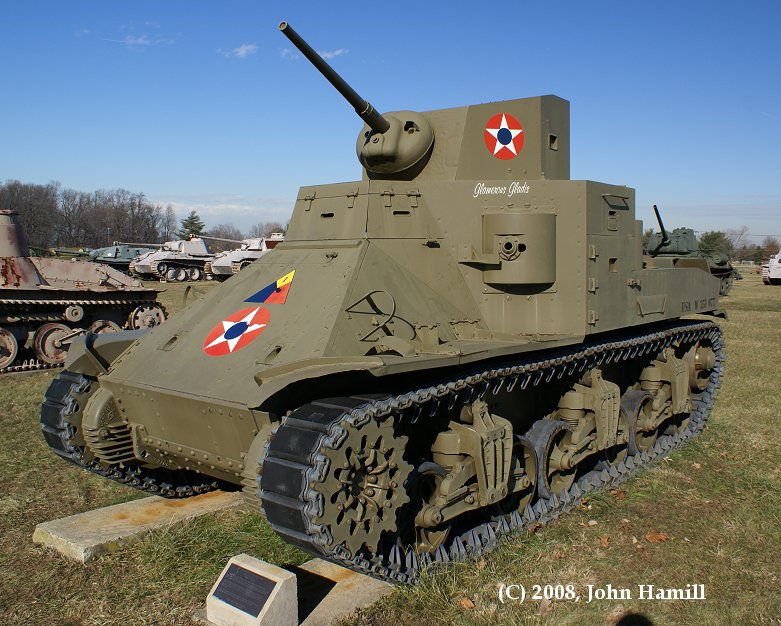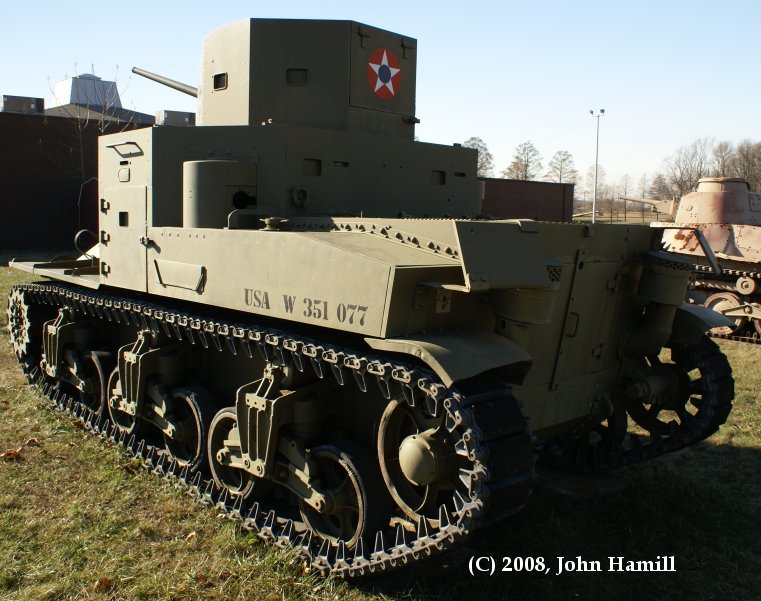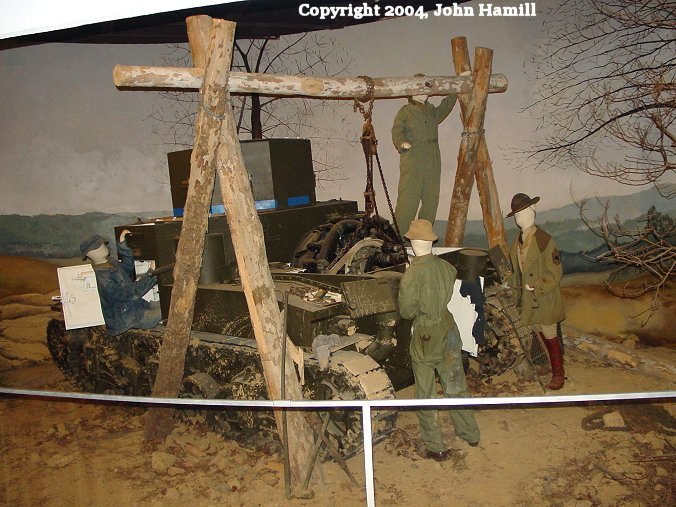

M-2 Medium



M-2 Medium
American tanks of World War II had several good features pioneered in earlier tanks like the M-2. Although Walter Christie's innovative designs could reach 70 mph speeds with the tracks removed, other designs were found more practical. Developed in 1932, the volute suspension system used a compact spring, shaped like a clock spring, to dampen shock. Although later replaced by the torsion bar system, the volute suspension didn't use any space inside the vehicle and could tolerate 45mph speeds. In the same year, rubber bushed tracks were developed. They lasted 5,000 miles compared to the 500 mile endurance of previous designs. Radial aircraft engines, powerful and reliable, were also introduced.
Including these features and front drive, which would be common on wartime US tanks, the T-5 Medium was designed and built in 1937. In 1939 it was standardized as the M-2 medium tank and put in production. Armed with a 37mm main gun and eight machine guns, it was inadequate to deal with German armor and never entered combat in Europe. It was, however, the basis for the much more successful M-3 Grant/Lee and M-4 Sherman.
Back to Armored Fighting Vehicles